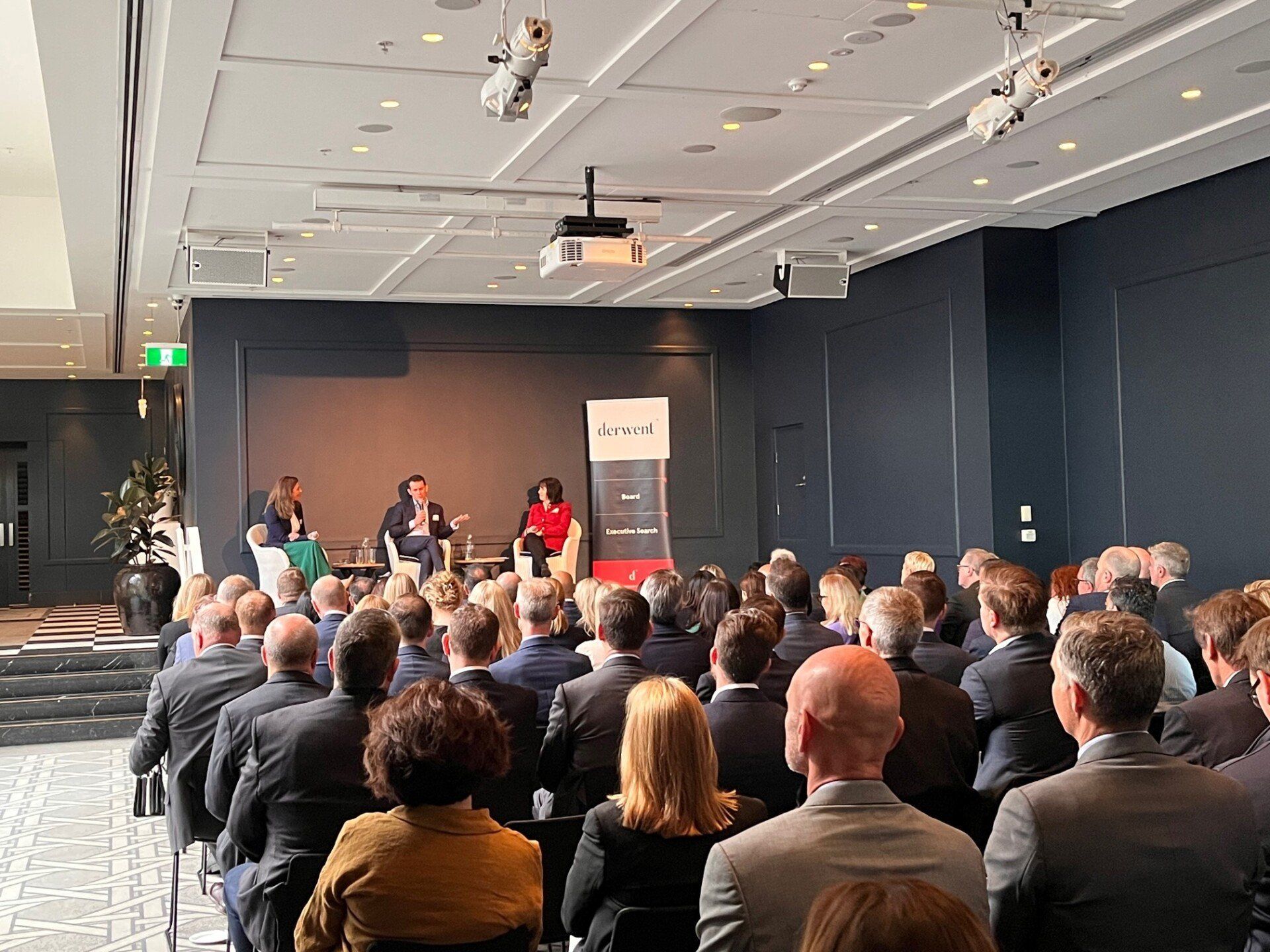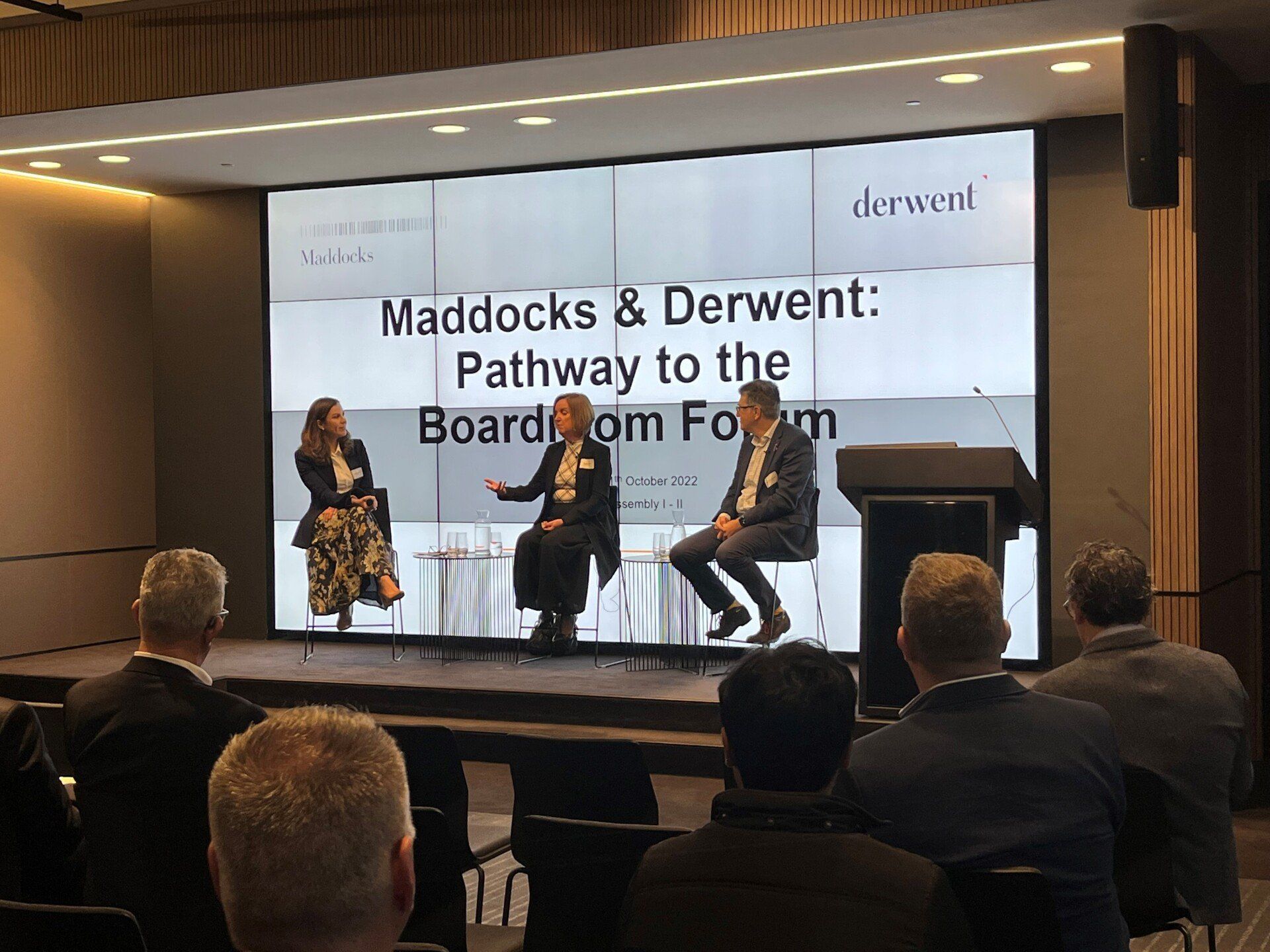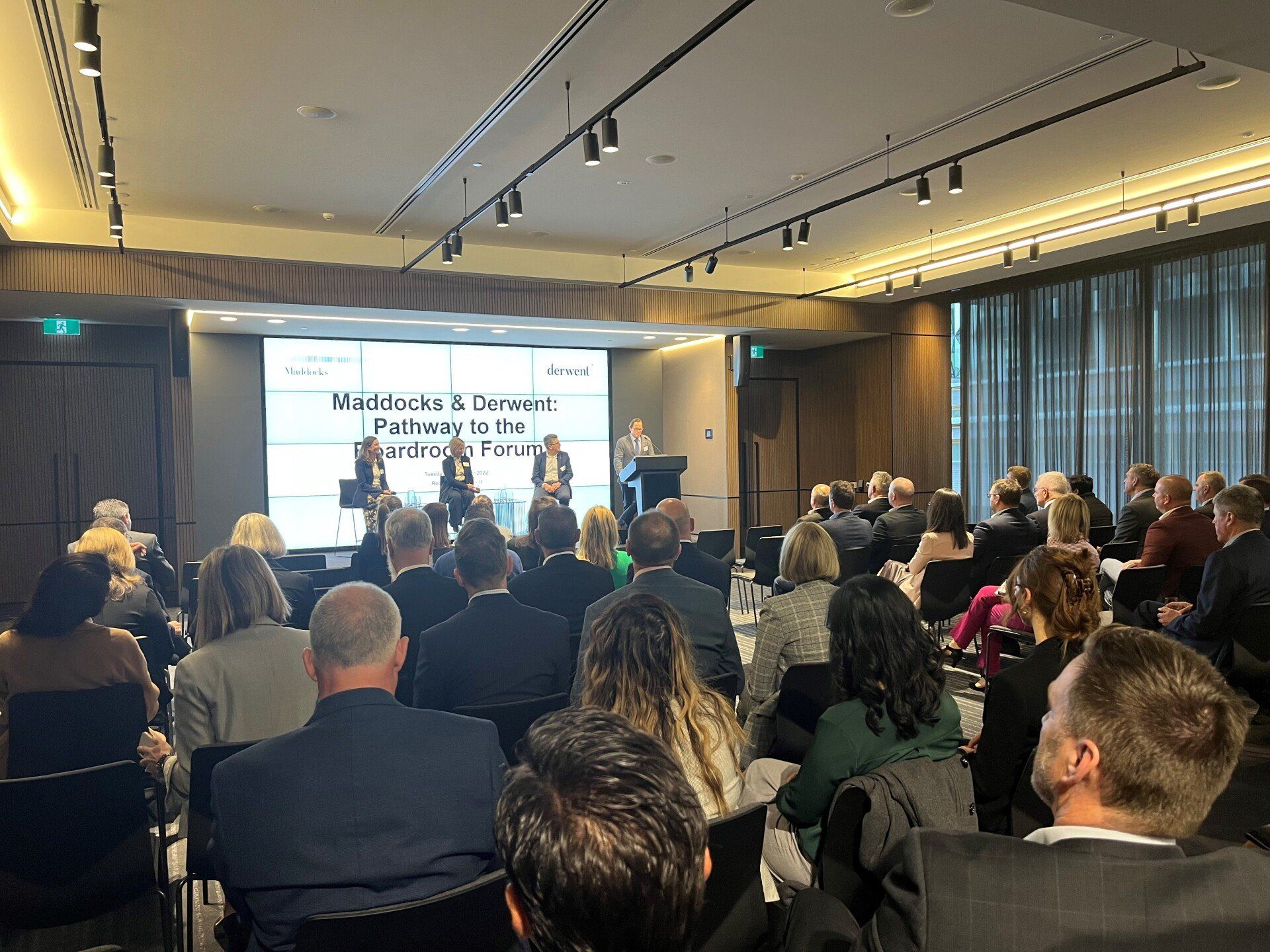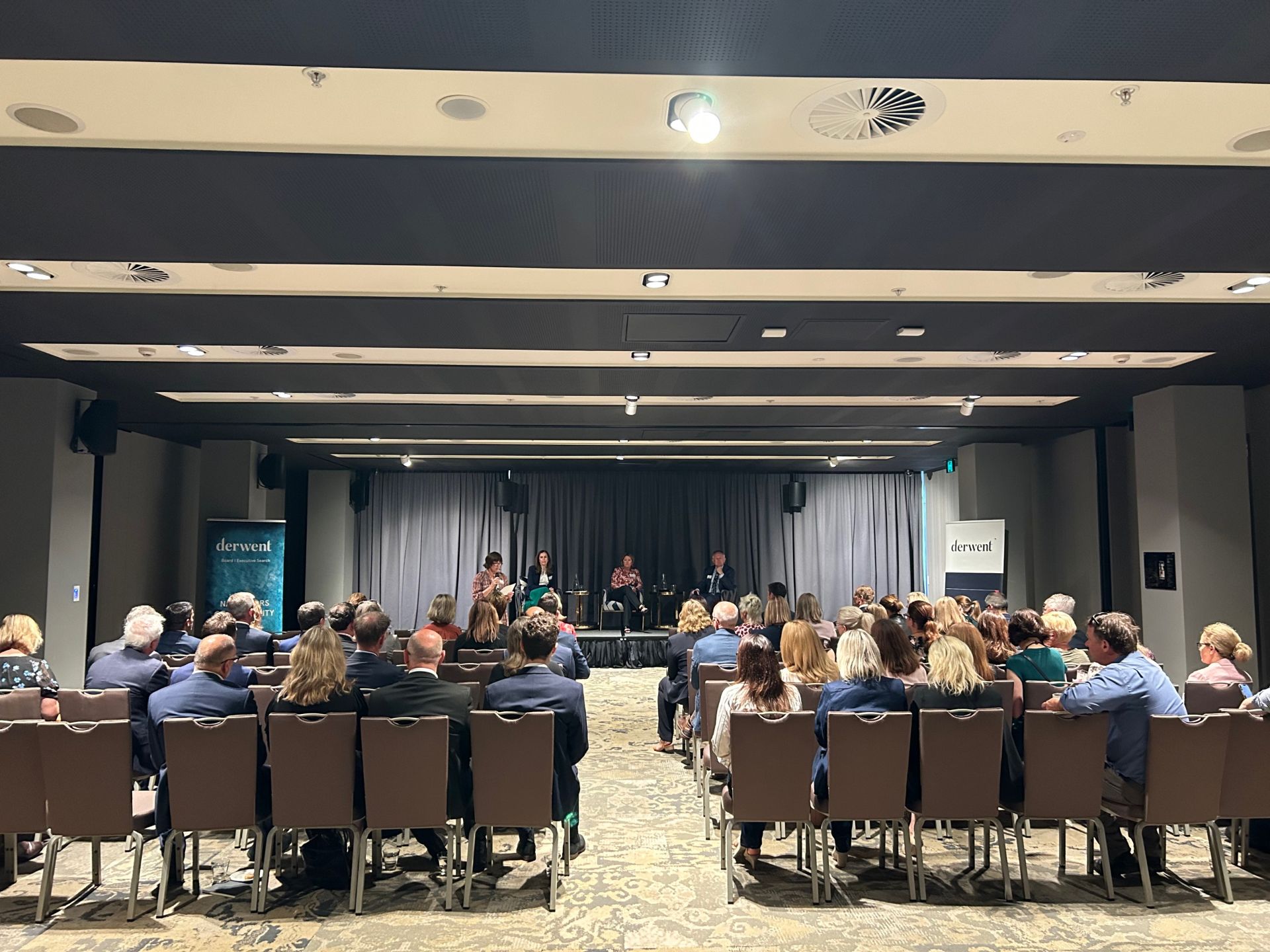News
Pathway to the Boardroom 2022

Derwent is delighted to have hosted three in person ‘Pathway to the Boardroom’ forums in Sydney, Melbourne and Perth. Over 200 attendees welcomed the opportunity to network with other aspiring Non Executive Directors and hear candid first hand insights from our guest speakers, these included Nicki Anderson, Stephen Health, Sandra Dodds, Bruce Rosengarten, Sharon Warburton and Jim Walker.
Key takeaways included:
- Transition to a Board career is a journey.
- Early on in a Board career it can be worthwhile taking on the Board roles that are seen as ‘risky’ by others, as this can give you a strong profile and launch a Board career.
- If possible, transition to a Board career slowly as this allows retention of an executive income. Consider taking on some consultancy or advisory work alongside your board roles.
- It is possible to have an Executive career alongside a Non Executive Director role, however you will need the support of the Chair of your day job. An advantage of doing it this way is it provides a different perspective and gives you the opportunity to work alongside a different Chair.
- It is important to define and clearly articulate your value proposition and brand.
- Networking and the use of Linkedin is crucial – show people that you are available for a Board role.
- Consider the time commitment carefully. It is not always a part time or predictable role.
- Ongoing learning and professional development is very important. Directors need to be constantly curious and scan both the domestic and international community.
- Due Diligence is imperative:
- Cultural fit is very important alongside respect for the Chair as leader of the culture. Low ego and authenticity are important traits
- Meet with the other Directors (read the body language) and identify if there is anyone in your network that has worked for the company
- Financial due diligence should include a check on the cashflow situation and a conversation with the Auditors
- Does the culture match the systems and processes, look out for consistent behaviours, read the media and be open to getting external help, e.g., what is behind the financials
- Be mindful that there is no perfect company, all businesses have challenges, which adds interest
- Understand the Chair, who they are, their style and values
- Onboarding: Have one-on-one meetings with the executive. Get out and visit the business. Learn the history and ask why certain decision were made. Go back to the Chair and CEO if you need more in your induction plan.
- Private and Family led Boards are very different to listed Boards, with a heightened focus on solving problems to keep the business moving (as it is their business at stake), less access to big data and the need to have patience over some issues as it takes time for the Founders to feel comfortable in making significant changes. When on a Board, you have far less power than when you are an Executive. This translates to understanding the importance of asking open rather than direct questions.
- Diversity on Boards should be viewed with a broad lens, it is imperative to have the right skills and capabilities but often these can be acquired through genuine diverse representation, as long as the focus remains on delivering the right outcome for stakeholders. Gender is just one piece of diversity, there are many other aspects to diversity of experience and perspective.
- ESG conversations at the Board level are about bringing together all the ESG corporate wide pockets of activity.
Share this article
Recent Articles









